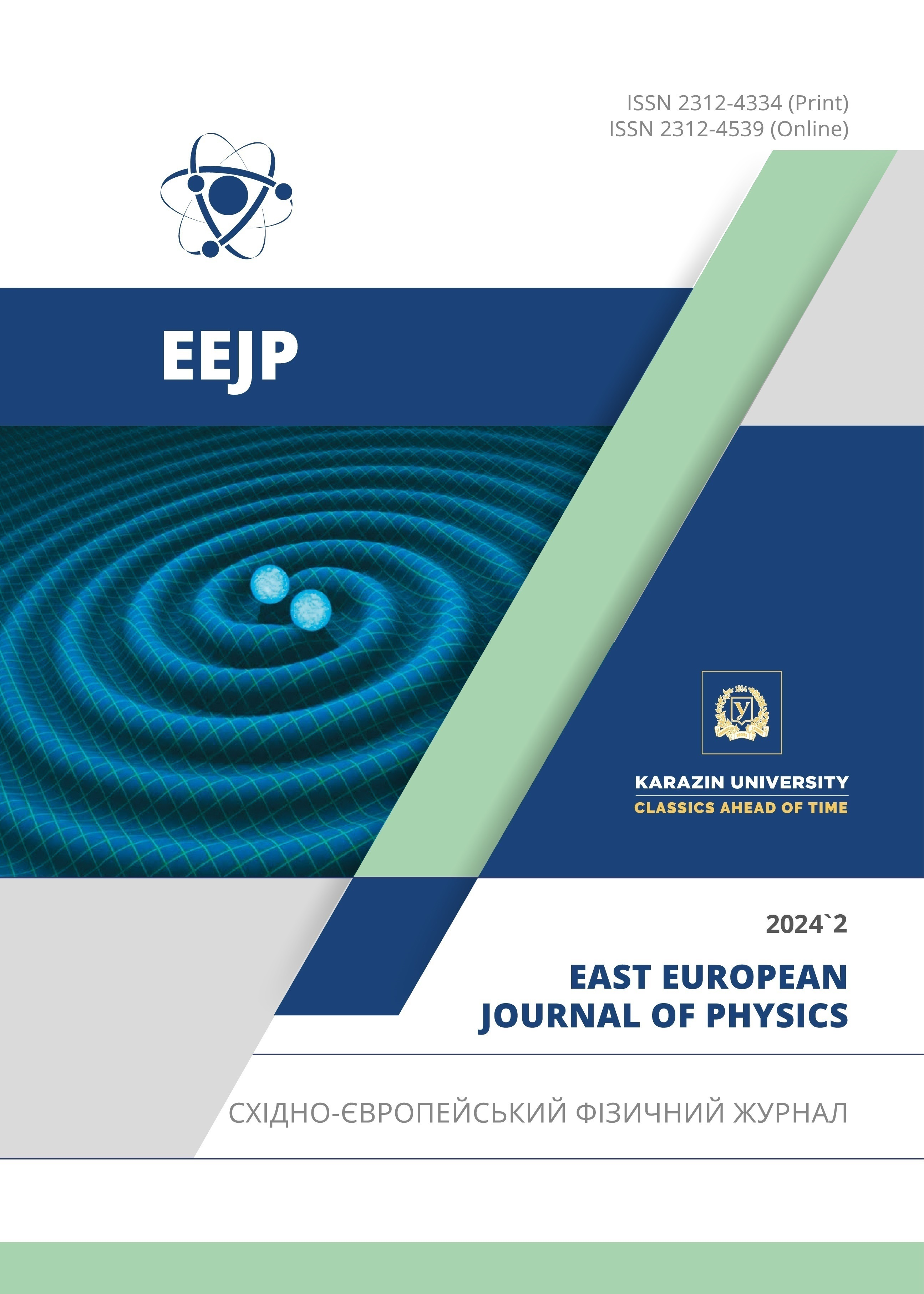Визначення частот коливань трихлориду фосфору з використанням вібраційного гамільтоніану
Анотація
У цьому дослідженні представлено підхід до точного визначення коливальних частот розтягування зв’язку P-Cl у трихлориді фосфору (PCl3) з використанням вібраційного гамільтонового підходу, який підтримує точкову групу симетрії C₃v. Наша методологія дозволяє точно передбачити вібраційні частоти до п'ятого обертона. Вона ідентифікує пов’язані комбіновані смуги, знаменуючи значний прогрес у вібраційній спектроскопії та молекулярному моделюванні. Підвищуючи точність і глибину нашого розуміння молекулярних коливань, це дослідження прокладає шлях до розробки складніших обчислювальних моделей, тим самим значно підвищуючи точність хімічних аналізів і вносячи внесок у ширшу область хімічної фізики.
Завантаження
Посилання
S. Oss, “Algebraic models in molecular spectroscopy,” in: Advances in Chemical Physics: New Methods in Computational Quantum Mechanics, edited by I. Prigogine, and S. A. Rice, vol. 93, (John Wiley & Sons, Inc., 1996), pp. 455–649. https://doi.org/10.1002/9780470141526.ch8
F. Iachello, and R.D. Levine, Algebraic Theory of Molecules, (Oxford University Press, Oxford, 1995).
F. Iachello, “Algebraic methods for molecular rotation-vibration spectra,” Chem. Phys. Lett. 78(3), 581–585 (1981). https://doi.org/10.1016/0009-2614(81)85262-1
V. Jaliparthi, and M.R. Balla, “Vibrational Hamiltonian of Tetrachloro-, Tetrafluoro-, and Mono- Silanes Using U(2) Lie Algebras,” Spectrochim. Acta A, 264, 120289 (2022). https://doi.org/10.1016/j.saa.2021.120289
M.R. Balla, and V. Jaliparthi, “Vibrational Hamiltonian of Methylene Chloride Using U(2) Lie Algebra,” Mol. Phys. 115, e1828634 (2021). https://doi.org/10.1080/00268976.2020.1828634
V. Jaliparthi, P. Suneetha, and K. Lavanya, “Vibrational spectra of cyclobutane-d8 using symmetry-adapted one-dimensional Lie algebraic framework,” Ukr. J. Phys. Opt. 24, 193–199 (2023). https://doi.org/10.3116/16091833/24/3/193/2023
M.R. Balla, and V. Jaliparthi, “Vibrational Hamiltonian of Naphthalene (C10H8) Using Dynamical U(2) Lie Algebras,” Polycycl. Aromat. Compd. 42(7), 4684–4699 (2022). https://doi.org/10.1080/10406638.2021.1901126
S. Nallagonda, and V. Jaliparthi, “Higher Overtone Vibrational Frequencies in Naphthalene Using the Lie Algebraic Technique,” Ukr. J. Phys. Opt. 25(2), 02080–02085 (2024). https://doi.org/10.3116/16091833/Ukr.J.Phys.Opt.2024.02080
J. Choudhury, N.K. Sarkar, and R. Bhattacharjee, “Infrared Spectra of PH3 and NF3: An Algebraic Approach,” Chinese Phys. Lett. 30(7), 070301 (2013). https://doi.org/10.1088/0256-307X/30/7/070301
K. Lavanya, A.G. Rao, and J. Vijayasekhar, “Vibrational Hamiltonian of Carbonyl Sulphide and Hydrogen Cyanide,” East Eur. J. Phys., (1), 432–435 (2024). https://doi.org/10.26565/2312-4334-2024-1-46
K. Nakamoto, Infrared and Raman Spectra of Inorganic and Coordination Compounds: Part A: Theory and Applications in Inorganic Chemistry, (Wiley, New York, 2009).
K.P. Huber, and G. Herzberg, Molecular Spectra and Molecular Structure. IV: Constants of Diatomic Molecules, (Van Nostrand Reinhold, New York, 1979).
T. Shimanouchi, Tables of Molecular Vibrational Frequencies Consolidated, Vol. I, (National Bureau of Standards, 1972).
Авторське право (c) 2024 К. Лаванья, М.В. Фані Кумарі, Дж. Віджаясекар

Цю роботу ліцензовано за Міжнародня ліцензія Creative Commons Attribution 4.0.
Автори, які публікуються у цьому журналі, погоджуються з наступними умовами:
- Автори залишають за собою право на авторство своєї роботи та передають журналу право першої публікації цієї роботи на умовах ліцензії Creative Commons Attribution License, котра дозволяє іншим особам вільно розповсюджувати опубліковану роботу з обов'язковим посиланням на авторів оригінальної роботи та першу публікацію роботи у цьому журналі.
- Автори мають право укладати самостійні додаткові угоди щодо неексклюзивного розповсюдження роботи у тому вигляді, в якому вона була опублікована цим журналом (наприклад, розміщувати роботу в електронному сховищі установи або публікувати у складі монографії), за умови збереження посилання на першу публікацію роботи у цьому журналі.
- Політика журналу дозволяє і заохочує розміщення авторами в мережі Інтернет (наприклад, у сховищах установ або на особистих веб-сайтах) рукопису роботи, як до подання цього рукопису до редакції, так і під час його редакційного опрацювання, оскільки це сприяє виникненню продуктивної наукової дискусії та позитивно позначається на оперативності та динаміці цитування опублікованої роботи (див. The Effect of Open Access).








